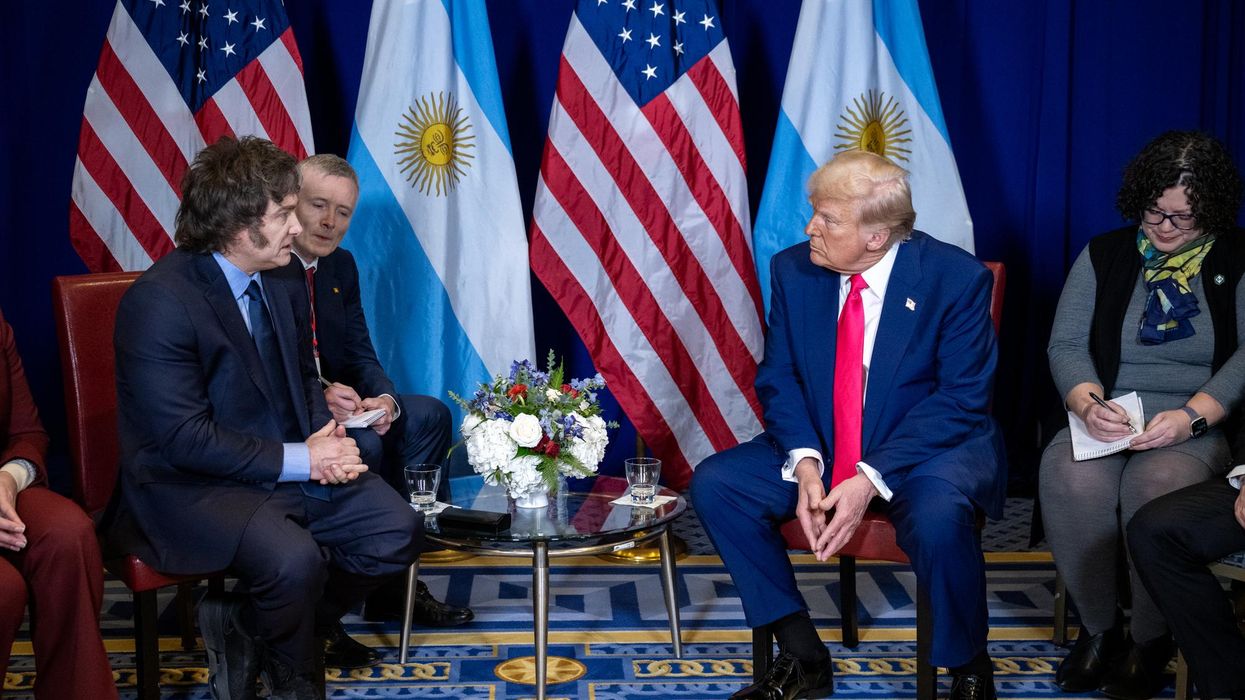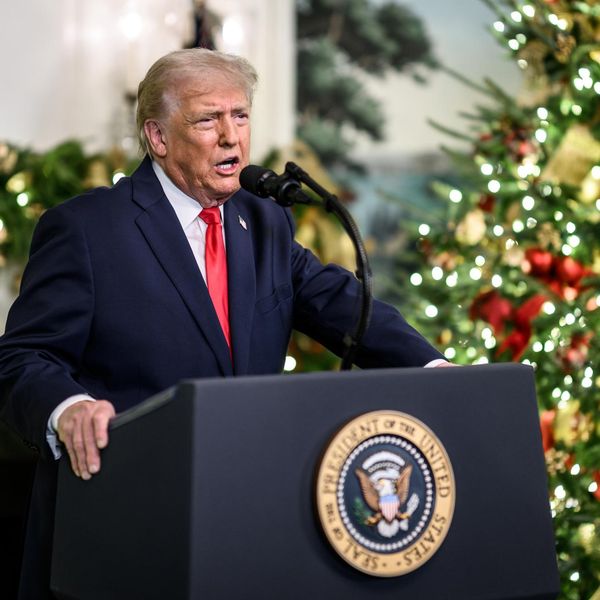A mounting maritime dispute between China and the Philippines, underwritten by spiraling U.S.-China tensions, threatens to ignite the South China Sea.
“China-Philippines relations are at a crossroads,” Chinese Foreign Minister Wang Yi warned his Philippine counterpart Enrique Manalo in a call on Dec. 20 following a string of contentious encounters in the South China Sea, including allegations that Chinese boats rammed a Philippine coast guard ship and fired water cannons at a resupply vessel.
China, Wang Yi told Manalo, will “definitely safeguard its rights” and “respond resolutely” if the Philippines “colludes with malicious external forces to continue causing trouble and chaos.” Wang’s warning comes on the heels of Philippine President Ferdinand Marcos Jr’s announcement earlier this year that his government is mulling a tripartite security pact with the U.S. and Japan.
The Philippines and its treaty ally, the United States, have repeatedly accused China of harassing Philippine vessels in the South China Sea. “We condemn, once again, China’s latest unprovoked acts of coercion and dangerous maneuvers against a legitimate and routine Philippine rotation and resupply mission,” said Jay Tarriela, spokesperson for the National Task Force for the West Philippine Sea (NTF-WPS), on the heels of a confrontation earlier this month near the Second Thomas Shoal.
“These actions reflect not only reckless disregard for the safety and livelihoods of Filipinos, but also for international law,” State Department spokesperson Matthew Miller said in a Dec. 10 statement.
“The United States stands with our Philippine allies in the face of these dangerous and unlawful actions. We reaffirm that Article IV of the 1951 U.S.-Philippines Mutual Defense Treaty extends to armed attacks on Philippine armed forces, public vessels, or aircraft – including those of its Coast Guard – anywhere in the South China Sea,” Miller added.
China, which claims sovereignty over most of the South China Sea, previously accused Philippine coast guard ships of trespassing in what it describes as Chinese waters. A 2016 Permanent Court of Arbitration ruling found China’s maritime claims in the South China Sea — commonly referred to as the nine-dash line — to be legally baseless. Beijing, which rejected the court ruling as “ill-founded” and “naturally null and void,” has persisted in vigorously defending its expansive claims as part of a larger delimitation dispute also involving Brunei, Malaysia, Vietnam, and Taiwan.
What exactly is at stake for China in its intensifying dispute with Manila and, by extension, its U.S. ally? “I think a lot of people in southeast Asia are mystified by why China is so pushy on this question,” said Sarang Shidore, Director of the Global South Program at QI, adding that the unresolved issue of Taiwan’s status is far more important to Beijing.
“The South China Sea, these tiny features and islands, their economic potential is relatively small, there’s fishing, but none of this rises to the level where you’d think China would be risking so much by pushing a very expansive claim,” Shidore added.
There are fishing and maritime disputes across the world, even including between allies, noted Lyle Goldstein, Director of Asia Engagement at Defense Priorities. “We have a major maritime territorial dispute with Canada… France and Britain go at it all the time over fisheries. It’s fairly normal activity even among friends,” Lyle told RS.
The China-Philippines squall is far from the only theater in Beijing’s ongoing maritime disputes, but it has escalated to a greater degree than many of the others due to Manila’s readiness to push back against China’s pressure tactics. Beijing has not engaged in an escalatory spiral with Malaysia and Brunei, despite their conflicting maritime claims, because these two states “are unlikely to make an issue of Chinese incidents and they don’t really even talk about them,” said Shidore, adding that their desire to preserve economic ties with China makes them “willing to absorb some costs.”
The Philippines has taken a more strident approach vis-à-vis Beijing than others in the South China Sea, said Shidore, partly as a byproduct of American presence in the region. “I think U.S. involvement is a big reason —the fact that the U.S. is present in the theater, and there is an alliance commitment, makes the situation not just a China-Philippines issue but a China-U.S. issue, and that’s when everything changes from the Chinese perspective,” he added.
“The Chinese, I think, are more concerned about the U.S., at this point, than the Philippines," continued Shidore, "the U.S. presence is making them see red and emboldening all the nationalist and hawkish forces in the Chinese structures.”
American obligations under the 1951 U.S.-Philippines Mutual Defense Treaty have raised concerns that Washington could find itself embroiled in a war in the South China Sea in the event of a direct military confrontation between China and the Philippines. “I think, unfortunately, all the signs are there for an escalating conflict,” Goldstein said.
“They [the Chinese] perceive that the stakes for them are very high,” Goldstein explained. “I believe all this tension with the Philippines is an outgrowth of Taiwan tension,” he said, noting that the Luzon strait, situated just south of Taiwan, has become an increasingly important fixture in U.S. preparations for a Taiwan contingency following the sharp spike in cross-strait tensions accompanying Nancy Pelosi’s 2022 visit to Taipei.
“The U.S. has been trying to put in place the groundwork to prepare for a day when they have to surge forces in a major way into Luzon,” he said. Beijing, in reaction to these developments, has sought to dial up the pressure on Manila with threats and maritime shows of force. “The subtext is: if you are going to cooperate with the U.S. on the Taiwan scenario, your interests will suffer badly, and that, I think, is why this bullying is occurring,” Goldstein said.
Shidore said the White House, in light of growing regional tensions, should “pull back in being so frontal on this issue, whether rhetorically or materially, in terms of its presence in the theater.” The U.S. has an active interest in exercising its substantial leverage over Manila “to nudge its more vulnerable partner to be more restrained in some of its actions,” Shidore wrote in a piece published by The Diplomat last week.
“We shouldn’t be encouraging the Philippines to get into a fight with China — they are likely to lose that fight,” said Goldstein.
“We do have a treaty with the Philippines… but that treaty should be read very narrowly. It should be read as, we defend the main islands of the Philippines — if they are threatened acutely, we will be there,” he added. “And if it means we need to put some defensive forces in those areas to reassure the Philippines, I’m okay with that. But my view is that we should not even consider going to war over rocks and reefs or different interpretations of the law of the sea. That would be extremely foolish and reckless, and it would be very hard to explain to American taxpayers.”
The China-Philippines maritime dispute does not, in of itself, reflect anything approaching an existential conflict. It has, however, become an increasingly dangerous proxy and potential flashpoint for underlying China-U.S. tensions in the South China Sea.
- Is US-Philippines defense pact like being 'shackled to a corpse'? ›
- The US and China are dangerously close to a military confrontation in the South China Sea ›
- Could a US-China War Begin over the Philippines? ›
- ISIS attack in the Philippines could upset US regional strategy | Responsible Statecraft ›
- Dangerous China-Philippine clashes could be expanding | Responsible Statecraft ›
- US should stay out of China-Philippines sea skirmishes | Responsible Statecraft ›
- Can US-Philippine talks calm South China Sea tensions? | Responsible Statecraft ›
- US stirring up more trouble in China-Philippines naval clash | Responsible Statecraft ›
















